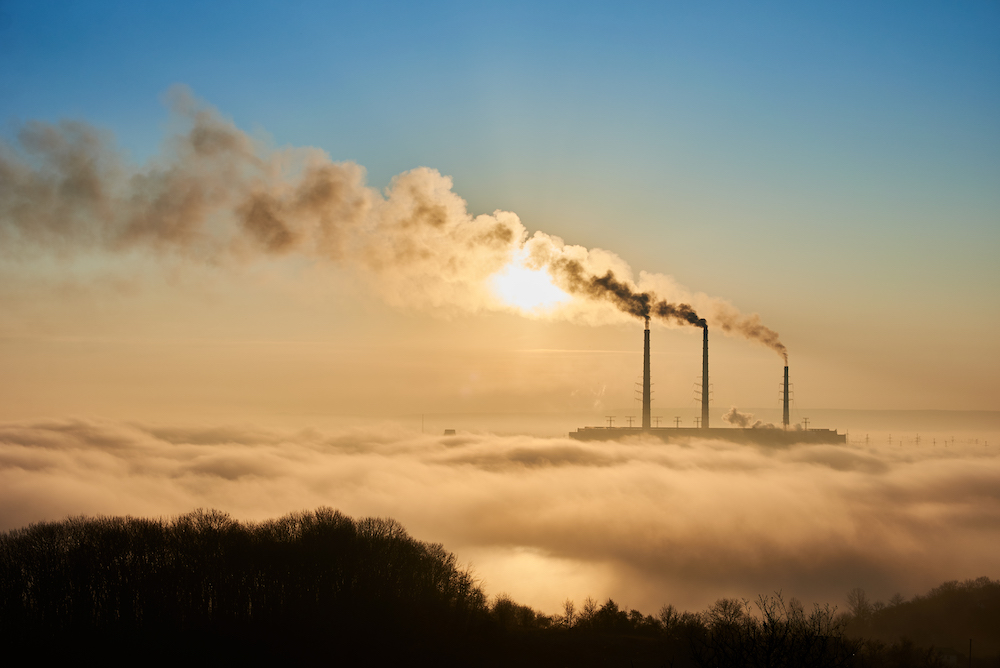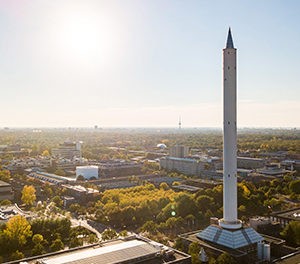Community-centric carbon capture and storage

Mines, Carbon America and Los Alamos National Laboratory were awarded $32.6 million in funding this year from the U.S. Department of Energy’s Carbon Storage Assurance Facility Enterprise (CarbonSAFE) initiative to advance the development of a potential carbon storage hub for the Pueblo, Colorado area.
CarbonSAFE Eos was one of nine projects selected by DOE as part of a $242 million nationwide investment to accelerate the development of large-scale, commercial carbon storage projects with capacities to securely store 50 or more million metric tons of carbon dioxide deep underground.
The goal of CarbonSAFE Eos, named after the Greek goddess of the dawn and new beginnings, is to reduce industrial emissions from cement, hydrogen and power plant operations and at the same time, create a model for responsible, community-centric carbon capture and storage (CCS) from the ground up, inclusive of community feedback in support of sustainable economic and social development goals.
“Given the urgency and scale of our climate challenge, we have to accelerate the buildout of CO2 storage hubs region-by-region across the country,” said Brad Crabtree, assistant secretary for fossil energy and carbon management at the U.S. Department of Energy. “The Colorado School of Mines project represents an important step toward that goal, and we look forward to working with them in this critical effort.”
“This is a positive plan for our higher education system, for students in Golden and Pueblo, and for our air, climate and planet. I was proud to sign new laws in partnership with the legislature to save people money on energy and reduce carbon emissions and pollution,” said Colorado Governor Jared Polis.
The DOE funding will cover data collection, detailed site characterization, planning, permitting and significant community and stakeholder engagement for the project, as well as training for the next generation of CCS professionals. The project will be co-led by Manika Prasad, director of the Mines Carbon Capture, Utilization and Storage (CCUS) Innovation Center, and Carbon America Senior Geologist Chris Cassle.
“To meet our global climate goals, we need to do so much more than we’re currently doing,” Prasad said. “Large-scale carbon sequestration sites, like the one we hope to build with the community of Pueblo, are an important piece of the puzzle, capable of reducing greenhouse gas emissions by millions of metric tons and enabling communities to transition toward zero-emissions energy generation.”
“This grant represents a significant milestone in our commitment to mitigating climate change and developing sustainable energy solutions,” said Brent Lewis, CEO of Carbon America. “By collaborating with the exceptional researchers at Colorado School of Mines and Los Alamos National Lab, we aim to unlock new possibilities for carbon capture and storage, helping to build a cleaner and more resilient future.”
“Los Alamos National Laboratory is excited to be a partner on this CarbonSAFE project along with Colorado School of Mines and Carbon America,” said Rajesh J. Pawar, senior scientist in the Earth and Environmental Sciences Division at Los Alamos. “This project strongly aligns with the Laboratory’s mission related to Energy Security through deployment of clean energy technologies while facilitating energy transition to meet net zero emissions goals. The Los Alamos technical team will be contributing to various aspects of this project, utilizing its decades-long experience and multidisciplinary capabilities related to CO2 capture, transport and storage.”
The Eos project aims to be an exemplar of community-centered carbon capture and storage, focused on how CCS in Pueblo can advance quality jobs, enable further business investment, and promote environmental justice and community partnership. The CarbonSAFE initiative falls under the DOE’s Justice 40 goals of ensuring that 40 percent of the benefits of federal clean energy investments flow to disadvantaged communities and help enhance energy equity. Should the project proceed to operations, it will also help fund education in Colorado.
“Pueblo has remarkable potential to demonstrate a new energy future. We are excited to create a community decarbonization solution anchored in vibrant community engagement and input for long-term social and economic success,” said Ashleigh Ross, vice president of strategic engagements and policy at Carbon America.
In addition to technical work, the project team will start early pre-planning outreach activities to support community engagement for the project. Community workshops will be held in the region to engage in two-way dialogue about the project and what community-centric CCS could look like in the area.
“We want to set a new high bar for industry-community compatibility and for this project to become the model for successful community relations for potential CCS projects on a national scale,” said Jessica Smith, professor of engineering, design and society at Mines and key member of the project team. “We will be developing the engagement strategy with key stakeholders in Pueblo to make sure it?s done in a way that?s locally responsive.”






There is perhaps no more ludicrous idea than that of carbon capture and storage (CCS) to “save the planet.” I understand that Mines must go where the money is, but… if engineering is by definition the integration of science with ideas to result in efficient, economical, and effective solutions to problems, CCS fails miserably.
One need only look at the numbers – the USA emits about 14% of worldwide greenhouse gases – the preponderance of which is CO2. In 2021, that was equal to about 6,340 million metric tons (tonnes) of CO₂ equivalent, per the EPA. Of that, about 72%, or 4,565,000,000 tonnes were not transportation-related.
As mentioned in the article, the development cost for nine projects to store about 50,000,000 tonnes per project is stated to be $242 million. Per the EPA, the 50,000,000 tonnes was a bit more than 1% of the non-transportation based CO₂ emitted in the USA in 2021. If 50,000,000 tonnes of CO₂ is not used for enhanced oil recovery, the government pays $85/tonne to the CCS facility. That is $4.25 billion dollars, plus the assumed to be one-time development cost. The article does not state if the 50 million tonnes will be the total stored or just an annual total. I assumed it’s an annual total.
Further illustrating the ludicrousness, ineffectiveness, and economic absurdity of this venture, because the USA’s portion of CO₂ emitted is only ~14% of the world’s total, the global effectiveness of this effort approaches, but does not quite reach, zero. For us to capture 20% of the USA’s non-transportation CO₂, a total of $85 billion would be paid to CCS facilities per year – and our 20% would be equal to only 2.8% of the world’s total emitted CO₂.
Meanwhile, virtually every country except the USA and those in Western Europe will continue to emit more and more each year – as evidenced by the 365,000 megawatts of coal plants under construction or planned. (globalenergymonitor.org)
Oh, and, per the article, don’t forget that “40% of the benefits of federal clean energy investments [should] flow to disadvantaged communities and help enhance energy equity.” What metric is used to determine the success of that? Why not just give 1000 communities $85,000,000 every year….?
I do hope the students learn from their involvement – I hope they learn that the government is a cruel mistress, and there’s no such thing as a free lunch.